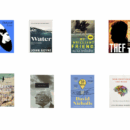Make yourself a truth worth telling

Let me return to the subject of “fru-fru” today. Regular readers will recall that fru-fru (or frou-frou if you prefer the original French) refers to empty embellishment—frippery for the sake of ostentation, having no substance behind it. In communication and branding terms, fru-fru is feel-good look-good messaging, devoid of meaning.
We all communicate, all the time, but what do we transmit? Truths, or lies? The temptation to come across better than we are seems to be eating up truth-telling. Too many communications—personal as well as professional—are just variations on lying.
You think not? But wait, aren’t you the one whose LinkedIn profile says you’re a dynamic self-starter, a results-oriented team player, a passionate and innovative thinker? Are you really? Or are you just parroting the cliches you see everyone else using—and employers accepting? Where in the waterfall of cliches is the real you?
Or is yours the product brand that claims your customers can become more attractive, lose weight, look ten years younger, find a soulmate, gain financial freedom, achieve enhanced energy and vitality, grow a successful business? Again, really? Just by buying your offering? By applying a cream, popping some pills, opening a bank account, using data bundles? It’s that easy, huh?
In both the corridors of commerce and the private galleries of our personal lives, the truth fails to find an echo. The crafted narrative and the fairy tale shut out the truth.
Many believe that branding is about constructing appealing facades that attract others—customers, employers, investors, friends, even soulmates. But what is behind your nicely decorated, beautifully lit facade? Are there good things happening once someone looks inside a person or a company? Or will the explorer attracted by the shopwindow recoil from the truth discovered therein?
Let’s consider an architect who’s marketing herself as “passionate about sustainability and environmental responsibility” in her brands. What if our architect is actually serious about this? Then her life and work would have to reflect her commitment. Her home would be full of energy-saving features; her portfolio of projects would harvest rainwater and solar energy and reflect fresh environmentally friendly innovations. If that happens, then she’s not just selling a fru-fru veneer for public admiration; she’s living her stated values. When she speaks, she is believable. She has evidence; and her voice rings with the cadences of sincerity. She will find her customers and her investors, because they believe what she believes, and will be drawn to her naturally.
Can corporations also be truth-tellers? Is that really so hard? Steeped as they are in unique selling propositions and marketing around buzzwords, for businesses a change of ethos and mindset is needed. In business life we tell half-truths so instinctively that truths become elusive mysteries. But what if we could not just walk our talk, but actually talk our walk? In other words, walk first, and describe it later? If our walk is determined, and efficient, and productive—talking about it is easy. Just tell the truth! If our products are actually of high quality, and actually useful in our customers’ lives—what an easy truth to tell. If our fledgling startup actually has huge upside for investors because its business model is unique and robust—what an easy truth to tell.
If on the other hand our walk is unstable and dangerous, our talk has a lot more work to do. That’s when the message massaging occurs. Because we’re really not very good, we must make up for this by sounding like we are.
Embracing truth is difficult, no doubt. How much easier just to let the spin-doctors and influencers do their thing. How much more gruelling it is to do the hard work that being a sound professional or good person or compelling business actually entails. Is there any reward to this?
Yes there is—but it requires patience. Tangible, palpable truth really does stand out from the crowd of fakers, but the fakers will probably win the early rounds and make the truth-tellers lose heart. If the straight-shooters persisted, they might find a stronger and more sustained reward coming their way. Why? Because fru-fru is actually nothing in the end, just froth. As the froth grows, sincerity becomes rare, and therefore more valuable. And once your stakeholders realize, wonder of wonders, that you actually are who you say you are, the tills will start ringing. Not immediately, because much of the world is easily fooled by untruths. The discerning will arrive first, followed by those who had their eyes finally opened.
Communication is best—and easiest—when it is founded on truths. It requires no polishing up, no embellishment, no pretence, and no retractions. Indeed, the most powerful truths become a story that others want to tell—on your behalf. Reality is the most powerful brand strategy. If you’re real, the world will listen, it will lean in, it will engage, it will buy—because it trusts you. Eventually.
Try to run a quiet truth audit of the things you profess to be, as a person or as an organization. If you can confidently say most of your messaging and portrayals emerge from hard truths—that’s great. But if you find yourself just ringing up lie after lie, a reckoning is probably coming.
Sunday Nation, 21 April 2024

Buy Sunny Bindra's new book
The X in CX
here »
Popular Posts
- My books of the yearDecember 14, 2025
- Here’s why you should become foolishNovember 30, 2025
- Confessions of an explaining personDecember 7, 2025
- How to listen, really listenNovember 16, 2025
- Is AI hiring your company into oblivion?November 23, 2025















